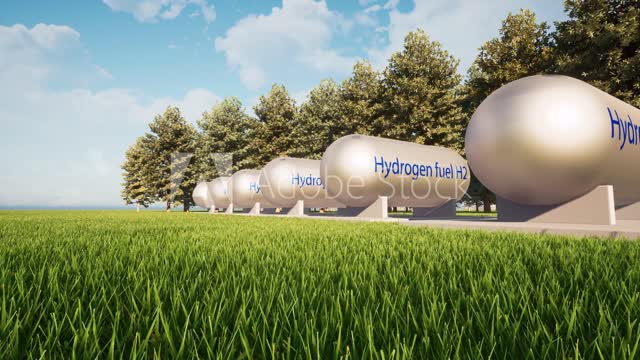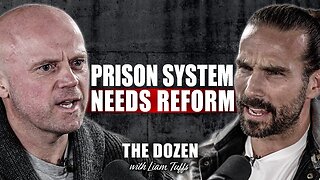Premium Only Content

A green hydrogen economy depends on this little-known machine –
Factories to make electrolysers have been announced in Australia, China, India and Spain
Solar power depends on the solar cell. Wind power, the wind turbine.
The key to the green hydrogen economy is a little-known machine with a name out of 1950s sci-fi — the electrolyser. And after a century of obscurity, the electrolyser’s moment has come.
Green hydrogen production involves water electrolysis. Electrolysis splits water molecules into hydrogen and oxygen, capturing and storing the hydrogen for use as fuel.
The electrolyser uses electricity to split water into hydrogen and oxygen. If that electricity comes from wind turbines, solar panels or a nuclear reactor, the whole process gives off no greenhouse gases. Factories, power plants, even jet aircraft can then burn that hydrogen without warming the earth.
There are other ways to make hydrogen fuel, from natural gas or even coal. But the ways to do it carbon-free, with no emissions that need to be trapped and stored, rely on the electrolyser.
“I don’t think people grasp what an electrolyser is,” said Andy Marsh, chief executive of Plug Power Inc, which makes the devices. “It is the building block of green hydrogen.”
Unlike wind turbines and solar cells, electrolysers aren’t immediately easy to understand. Larger ones can look like a jumble of tubes and pipes, while smaller, more modular versions are collections of electronics and machinery crammed into boxes the size of a shipping container or even a fridge.
Scientists discovered the process the electrolyser employs — electrolysis — more than two centuries ago, and commercial electrolysers hit the market in the 1920s. They were the main way to produce hydrogen until the 1960s, when a process using steam to strip hydrogen from natural gas supplanted them. Almost all of the hydrogen used around the globe today — in oil refineries, fertiliser plants and chemical industries — comes from natural gas. Demand for electrolysers dried up.
That has now changed — in just the last few years. Measured by the amount of power the machines consume, worldwide electrolyser sales doubled from 200 megawatts in 2020 to 458MW in 2021, said BloombergNEF, a clean energy research group. They’re expected to triple this year, reaching anywhere from 1,839MW to 2,464MW, BloombergNEF predicts. It may be the kind of hockey-stick moment solar power experienced a decade ago.
“It’s going to be difficult to supply all the demand,” said Amy Adams, vice president of fuel cell and hydrogen technologies at Cummins Inc, a veteran engine maker that has jumped into the business. “Can everybody scale up the supply base as fast as people would like?”
Even more explosive growth likely lies ahead. Electrolyser “gigafactories,” each able to make enough electrolysers in one year to use at least 1,000 megawatts of power, have been announced in Australia, China, India and Spain.
“When somebody says they’re going to build a gigafactory, they’re talking about in a year having more capacity than is installed in the world today,” said Patrick Molloy, a manager in the climate aligned industries programme at the US-based RMI energy and climate think tank.
The amount of hydrogen each megawatt of electricity can produce varies, making comparisons between products and projects difficult. The most popular electrolyser technology needs between 51 and 54 kilowatt hours of electricity, on average, to produce one kilogram of hydrogen, according to BNEF.
About Us https://bit.ly/3GUPFOa +919942258153 kvk.subadhra@gmail.com
Thank You Very Much for Sharing YourValuable Thoughts
https://133abjz5wa-5n2b9ueyf-zcr2y.hop.clickbank.net
-
 0:30
0:30
GreenTimeMachineUSA
2 years agoGreen Time Machine (Maniac Man)
22 -
 1:20:04
1:20:04
Tim Pool
4 days agoGame of Money
31.5K9 -
 2:21:11
2:21:11
Nerdrotic
9 hours ago $18.94 earnedDown the Rabbit Hole with Kurt Metzger | Forbidden Frontier #090
81.9K19 -
 2:41:13
2:41:13
vivafrei
14 hours agoEp. 251: Bogus Social Security Payments? DOGE Lawsduit W's! Maddow Defamation! & MORE! Viva & Barnes
219K255 -
 1:19:23
1:19:23
Josh Pate's College Football Show
7 hours ago $3.30 earnedBig Ten Program Rankings | What Is College Football? | Clemson Rage| Stadiums I Haven’t Experienced
54.6K1 -
 LIVE
LIVE
Vigilant News Network
12 hours agoBombshell Study Reveals Where the COVID Vaccine Deaths Are Hiding | Media Blackout
1,862 watching -
 1:17:59
1:17:59
Sarah Westall
8 hours agoDOGE: Crime & Hysteria bringing the Critics & the Fearful - Plus new CDC/Ukraine Crime w/ Dr Fleming
36.6K3 -
 45:39
45:39
Survive History
14 hours ago $6.95 earnedCould You Survive in the Shield Wall at the Battle of Hastings?
51K6 -
 1:50:28
1:50:28
TheDozenPodcast
13 hours agoViolence, Abuse, Jail, Reform: Michael Maisey
90.7K4 -
 23:01
23:01
Mrgunsngear
1 day ago $5.28 earnedWolfpack Armory AW15 MK5 AR-15 Review 🇺🇸
78.5K12